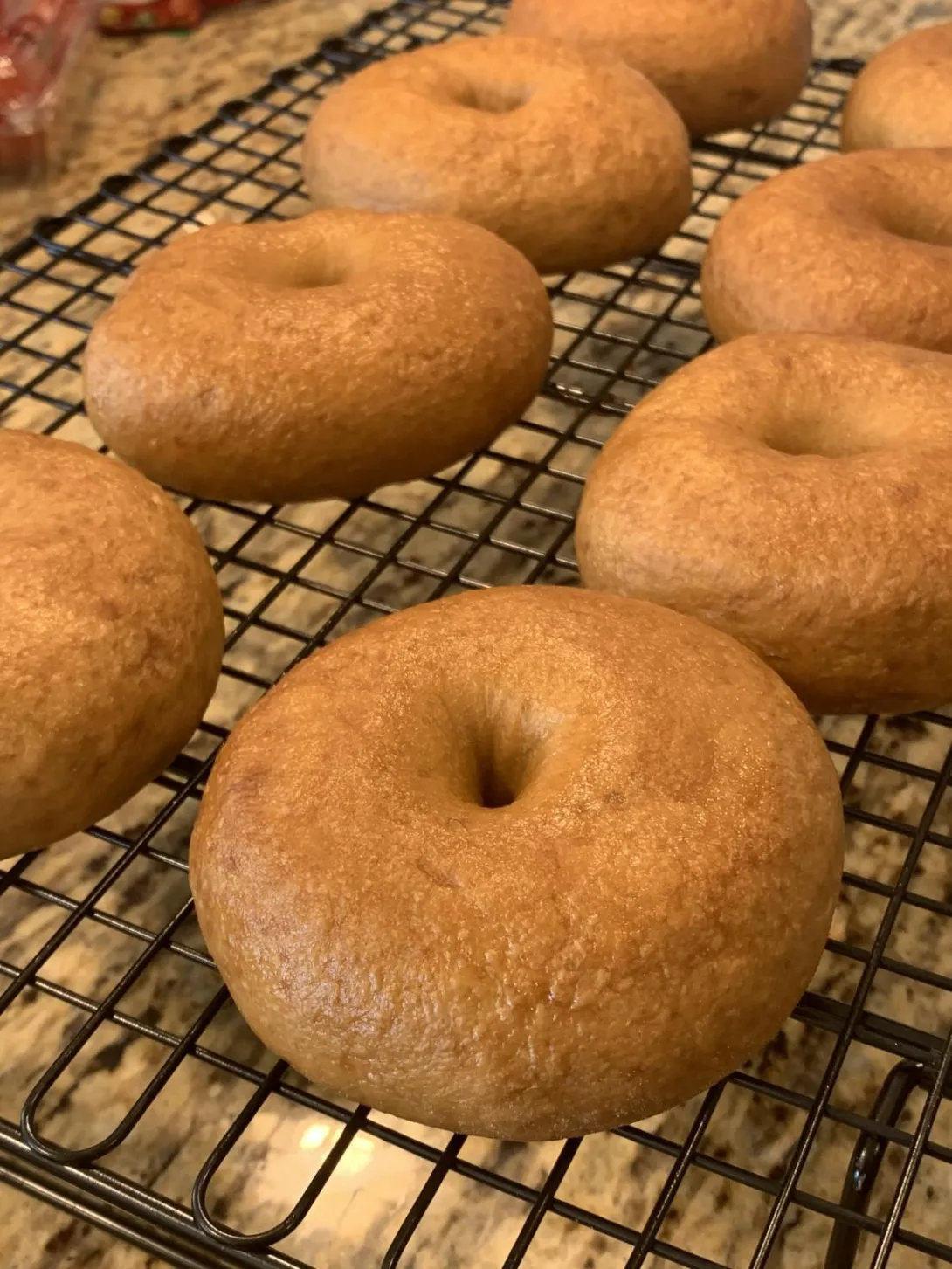I generally like where I am with making bagels except...
I cannot get that smoother, harder, crunchier crust that I so envy when I buy one in New York!
Method wise: Regular dough recipe with some barley malt syrup in there. After kneading, I shape into bagels and cold proof overnight. My boil bath has a good dose of "baked" baking soda (about a tbs/quart of water), a tbs of barley malt. I boil for about 90 seconds, then into a 475F oven for 15-16 minutes. Interior temp is 105 and the crust is nicely browned, but still feel a little bread-like on the crust.
Do I
Image

for a stiffer dough or setting the refrigerator colder. Something to slow down the fermentation. They may be too bread like if over fermented.
Thank for your reply. What I meant by "bread-like" was more the surface texture. My fridge is right at 40F and any doughs I put in there to cold proof very rise.
I don't have a clear answer to your bagel crust question. I don't, however, have your problem. Here are differences I have with your recipe: 1.) I use high gluten flour (15% protein) or bread flour (12.5% protein) with added vital wheat gluten. 2.) I boil my bagels on both sides, 90 seconds on the first side, then 60 seconds flipped over. 3.) I use LOTS of water and a lot more sugar; whether malt syrup, white sugar, or honey doesn't seem to make a difference. 4.) I never use baking soda in the water bath. 5.) I bake my bagels at 450F, but have also baked them at 475F and 500F without seeing a crust difference.
I forgot to add that I use the bagel recipe in Hamelman's first edition of Bread. It calls for 19 oz of water with the 2 lbs of flour, along with other ingredients, which includes malt powder, which I see you don't use.
I may have been a little sparse in my description, but my ingredients and method seem nearly identical.
I use a 14% bread flour (no additional vital gluten, which I can certainly try)
I boil both sides, generally 90 seconds each side. I've had some insist that it needs to be a rolling boil, but I know that boiling that high can really beat up vegetables, and I imagine it can do the same to dough, so mine is more a soft boil -- certainly enough to keep it up to temp when the cold dough hits it)
I could use more sugar, but what forms the crust, as I understanding it, is the gelatinization of the surface starches from the boiling. I do use "baked" baking soda since that is a magic ingredient in pretzels - a texture I am seeking to approach.
I bake at at least 450.
Thanks for your suggestions. I'll keep working at it.
I took a class several months ago and we made sourdough pretzels. They were the soft ones, similar to what is sold in some shopping centers. To get that crust (similar to many bagels), she froze our pretzels for 1 hour, then dipped them briefly into a lye solution for 10 seconds. It was made with food grade lye crystals. After the lye bath, they were placed on a parchment sheet lined pan, salted, and then baked. They came out really good!
She was careful to point out her safety protocol (safety glasses, gloves, apron) and neutralized the leftover solution with vinegar before disposing. I googled all this after I got home and there is quite a bit of info available. In the end, I decided not to pursue it further for us (we don't eat enough bagels or pretzels to make it all worth the effort). The only time I tried to make the pretzels again I used a more concentrated baking soda boil (use fresh baking soda, it matters), and those came out close enough for our tastes.
Edit: When I made them at home, I did freeze them for an hour before putting them into the gently boiling baking soda water. And I also used baked baking soda, as you described. Not sure what the science is behind the freezing piece.... Maybe allows the crust to be impacted without changing the dough?
Best wishes in your pursuit of a great bagel!
Try upping your oven temp to 500 F. I assume you’re baking them on a stone? I would dispense with baking soda; it’s not used to my knowledge in bagel boiling.